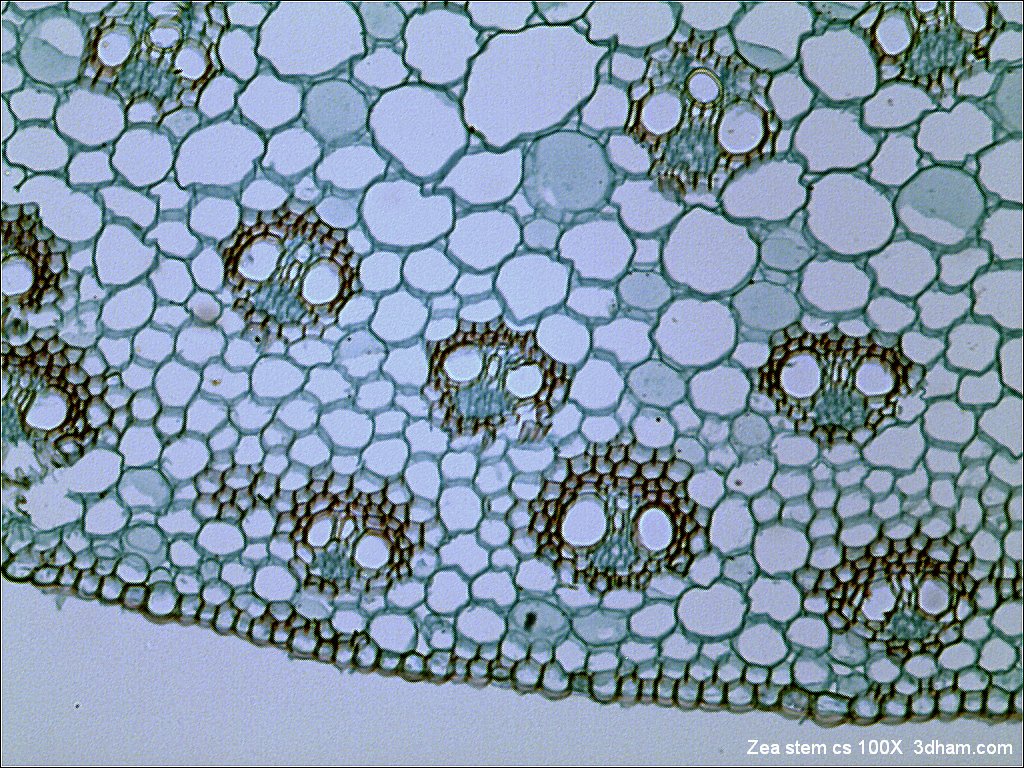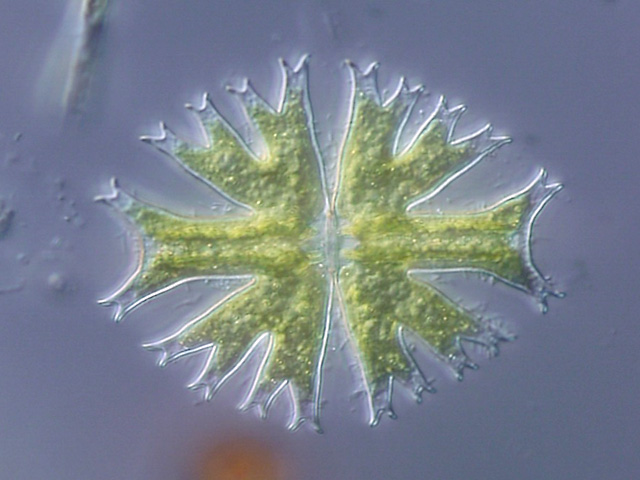|
Transillumination
Transillumination is the technique of sample illumination by transmission of light through the sample. Transillumination is used in a variety of methods of imaging. Microscopy In microscopy transillumination refers to the illumination of a sample by transmitted light. In its most basic form it generates a bright field image, and is commonly used with transillumination techniques such as phase contrast and differential interference contrast microscopy. Medicine In medicine transillumination generally refers to the transmission of light through tissues of the body. A common example is the transmission of light through fingers, producing a red glow due to red blood cells absorbing other wavelengths of light. Organs analysed include the sinuses, the breasts and the testes. It is widely used by pediatricians to shine light in bodies of infants and observe the amount of scattered light. Since their skeleton is not fully calcified, light can easily penetrate tissues. Common examples of ... [...More Info...] [...Related Items...] OR: [Wikipedia] [Google] [Baidu] |
Bright-field Microscopy
Bright-field microscopy (BF) is the simplest of all the optical microscopy illumination techniques. Sample illumination is transmitted (i.e., illuminated from below and observed from above) white light, and contrast in the sample is caused by attenuation of the transmitted light in dense areas of the sample. Bright-field microscopy is the simplest of a range of techniques used for illumination of samples in light microscopes, and its simplicity makes it a popular technique. The typical appearance of a bright-field microscopy image is a dark sample on a bright background, hence the name. Light path The light path of a bright-field microscope is extremely simple, no additional components are required beyond the normal light-microscope setup. The light path therefore consists of: * a transillumination light source, commonly a halogen lamp in the microscope stand; * a condenser lens, which focuses light from the light source onto the sample; * an objective lens, which collects li ... [...More Info...] [...Related Items...] OR: [Wikipedia] [Google] [Baidu] |
Hydrocele
A hydrocele is an accumulation of serous fluid in a body cavity. A hydrocele testis, the most common form of hydrocele, is the accumulation of fluids around a testicle. It is often caused by fluid collecting within a layer wrapped around the testicle, called the tunica vaginalis, which is derived from peritoneum. Provided there is no hernia present, it goes away without treatment in the first year. Although hydroceles usually develop in males, rare instances have been described in females in the Canal of Nuck. Primary hydroceles may develop in adulthood, particularly in the elderly and in hot countries, by slow accumulation of serous fluid. This is presumably caused by impaired reabsorption, which appears to be the explanation for most primary hydroceles, although the reason remains obscure. A hydrocele can also be the result of a plugged inguinal lymphatic system caused by repeated, chronic infection of ''Wuchereria bancrofti'' or ''Brugia malayi'', two mosquito-borne parasit ... [...More Info...] [...Related Items...] OR: [Wikipedia] [Google] [Baidu] |
Microscopy
Microscopy is the technical field of using microscopes to view objects and areas of objects that cannot be seen with the naked eye (objects that are not within the resolution range of the normal eye). There are three well-known branches of microscopy: optical, electron, and scanning probe microscopy, along with the emerging field of X-ray microscopy. Optical microscopy and electron microscopy involve the diffraction, reflection, or refraction of electromagnetic radiation/electron beams interacting with the specimen, and the collection of the scattered radiation or another signal in order to create an image. This process may be carried out by wide-field irradiation of the sample (for example standard light microscopy and transmission electron microscopy) or by scanning a fine beam over the sample (for example confocal laser scanning microscopy and scanning electron microscopy). Scanning probe microscopy involves the interaction of a scanning probe with the surface of the ... [...More Info...] [...Related Items...] OR: [Wikipedia] [Google] [Baidu] |
Phase Contrast
Phase-contrast imaging is a method of imaging that has a range of different applications. It exploits differences in the refractive index of different materials to differentiate between structures under analysis. In conventional light microscopy, phase contrast can be employed to distinguish between structures of similar transparency, and to examine crystals on the basis of their double refraction. This has uses in biological, medical and geological science. In X-ray tomography, the same physical principles can be used to increase image contrast by highlighting small details of differing refractive index within structures that are otherwise uniform. In transmission electron microscopy (TEM), phase contrast enables very high resolution (HR) imaging, making it possible to distinguish features a few Angstrom apart (at this point highest resolution is 40 pm). Light microscopy Phase contrast takes advantage of the fact that different structures have different refractive indices, and e ... [...More Info...] [...Related Items...] OR: [Wikipedia] [Google] [Baidu] |
Differential Interference Contrast
Differential interference contrast (DIC) microscopy, also known as Nomarski interference contrast (NIC) or Nomarski microscopy, is an optical microscopy technique used to enhance the contrast in unstained, transparent samples. DIC works on the principle of interferometry to gain information about the optical path length of the sample, to see otherwise invisible features. A relatively complex optical system produces an image with the object appearing black to white on a grey background. This image is similar to that obtained by phase contrast microscopy but without the bright diffraction halo. The technique was developed by Polish physicist Georges Nomarski in 1952. DIC works by separating a polarized light source into two orthogonally polarized mutually coherent parts which are spatially displaced (sheared) at the sample plane, and recombined before observation. The interference of the two parts at recombination is sensitive to their optical path difference (i.e. the product of ... [...More Info...] [...Related Items...] OR: [Wikipedia] [Google] [Baidu] |
Pediatrician
Pediatrics ( also spelled ''paediatrics'' or ''pædiatrics'') is the branch of medicine that involves the medical care of infants, children, adolescents, and young adults. In the United Kingdom, paediatrics covers many of their youth until the age of 18. The American Academy of Pediatrics recommends people seek pediatric care through the age of 21, but some pediatric subspecialists continue to care for adults up to 25. Worldwide age limits of pediatrics have been trending upward year after year. A medical doctor who specializes in this area is known as a pediatrician, or paediatrician. The word ''pediatrics'' and its cognates mean "healer of children," derived from the two Greek words: (''pais'' "child") and (''iatros'' "doctor, healer"). Pediatricians work in clinics, research centers, universities, general hospitals and children's hospitals, including those who practice pediatric subspecialties (e.g. neonatology requires resources available in a NICU). History The ... [...More Info...] [...Related Items...] OR: [Wikipedia] [Google] [Baidu] |
Dental Caries
Tooth decay, also known as cavities or caries, is the breakdown of teeth due to acids produced by bacteria. The cavities may be a number of different colors from yellow to black. Symptoms may include pain and difficulty with eating. Complications may include inflammation of the tissue around the tooth, tooth loss and infection or abscess formation. The cause of cavities is acid from bacteria dissolving the hard tissues of the teeth ( enamel, dentin and cementum). The acid is produced by the bacteria when they break down food debris or sugar on the tooth surface. Simple sugars in food are these bacteria's primary energy source and thus a diet high in simple sugar is a risk factor. If mineral breakdown is greater than build up from sources such as saliva, caries results. Risk factors include conditions that result in less saliva such as: diabetes mellitus, Sjögren syndrome and some medications. Medications that decrease saliva production include antihistamines and anti ... [...More Info...] [...Related Items...] OR: [Wikipedia] [Google] [Baidu] |
Dental Trauma
Dental trauma refers to trauma (injury) to the teeth and/or periodontium (gums, periodontal ligament, alveolar bone), and nearby soft tissues such as the lips, tongue, etc. The study of dental trauma is called dental traumatology.''Textbook and Color Atlas of Traumatic Injuries to the Teeth'', Fourth Edition, edited by Andreason J, Andreasen F, and Andersson L, Wiley-Blackwell, Oxford, UK, 2007 Types Dental injuries Dental injuries include: * Enamel infraction * Enamel fracture * Enamel-dentine fracture * Enamel-dentine fracture involving pulp exposure * Root fracture of tooth Periodontal injuries * Concussion (bruising) *Subluxation of the tooth (tooth knocked loose) * Luxation of the tooth (displaced) **Extrusive ** Intrusive **Lateral * Avulsion of the tooth (tooth knocked out) Injuries to supporting bone This injury involves the alveolar bone and may extend beyond the alveolus. There are five different types of alveolar fractures: * Communicated fracture of ... [...More Info...] [...Related Items...] OR: [Wikipedia] [Google] [Baidu] |
Enamel Infractions
Enamel may refer to: Decorative arts * Vitreous enamel, a smooth, durable coating for metal, made of melted and fused glass powder * Enamelled glass, glass which has been decorated with vitreous enamel * Overglaze enamelling, painting on top of glaze in pottery Dentistry * Tooth enamel, the hard mineralised surface of teeth * Enamel organ, a cellular aggregation in a developing tooth that is responsible for the formation of enamel Industrial products * Enamel paint, commercial paint that dries to an especially hard glossy finish * Enameled wire Magnet wire or enameled wire is a copper (Cu) or aluminium (Al) wire coated with a very thin layer of insulation. It is used in the construction of transformers, inductors, motors, generators, speakers, hard disk head actuators, electrom ..., wire insulated with a hard polymer coating See also * {{disambiguation ... [...More Info...] [...Related Items...] OR: [Wikipedia] [Google] [Baidu] |
Julius Bruck
Julius Bruck (October 6, 1840 – April 20, 1902) was a German dentist who was a native of Breslau. He studied dentistry and medicine at the Universities of Breslau, Berlin, Bonn and Paris; obtaining a degree in dentistry from Berlin in 1858. Afterwards he worked as an assistant to his father, Jonas Bruck (1813-1883) in Breslau. In 1871 he became privat-docent at the University of Breslau, and in 1891 was awarded with an honorary professorship. In 1867 Bruck designed a water-cooled diaphanoscopic instrument for translumination of the bladder via the rectum. This instrument consisted of an illuminated platinum thread inserted into a double glass wall cylinder with the instrument's outer glass chamber cooled by water. Selected publications * ''Die Krankheiten des Zahnfleisches'' (Diseases of the gums) * ''Beiträge zur Pathologie und Histologie der Zahnpulpa'' (Contributions to the pathology and histology of the dental pulp) * ''Ueber Angeborene und Erworbene Defekte des Ges ... [...More Info...] [...Related Items...] OR: [Wikipedia] [Google] [Baidu] |
Medical Treatments
Medicine is the science and practice of caring for a patient, managing the diagnosis, prognosis, prevention, treatment, palliation of their injury or disease, and promoting their health. Medicine encompasses a variety of health care practices evolved to maintain and restore health by the prevention and treatment of illness. Contemporary medicine applies biomedical sciences, biomedical research, genetics, and medical technology to diagnose, treat, and prevent injury and disease, typically through pharmaceuticals or surgery, but also through therapies as diverse as psychotherapy, external splints and traction, medical devices, biologics, and ionizing radiation, amongst others. Medicine has been practiced since prehistoric times, and for most of this time it was an art (an area of skill and knowledge), frequently having connections to the religious and philosophical beliefs of local culture. For example, a medicine man would apply herbs and say prayers for healing, or an ... [...More Info...] [...Related Items...] OR: [Wikipedia] [Google] [Baidu] |






